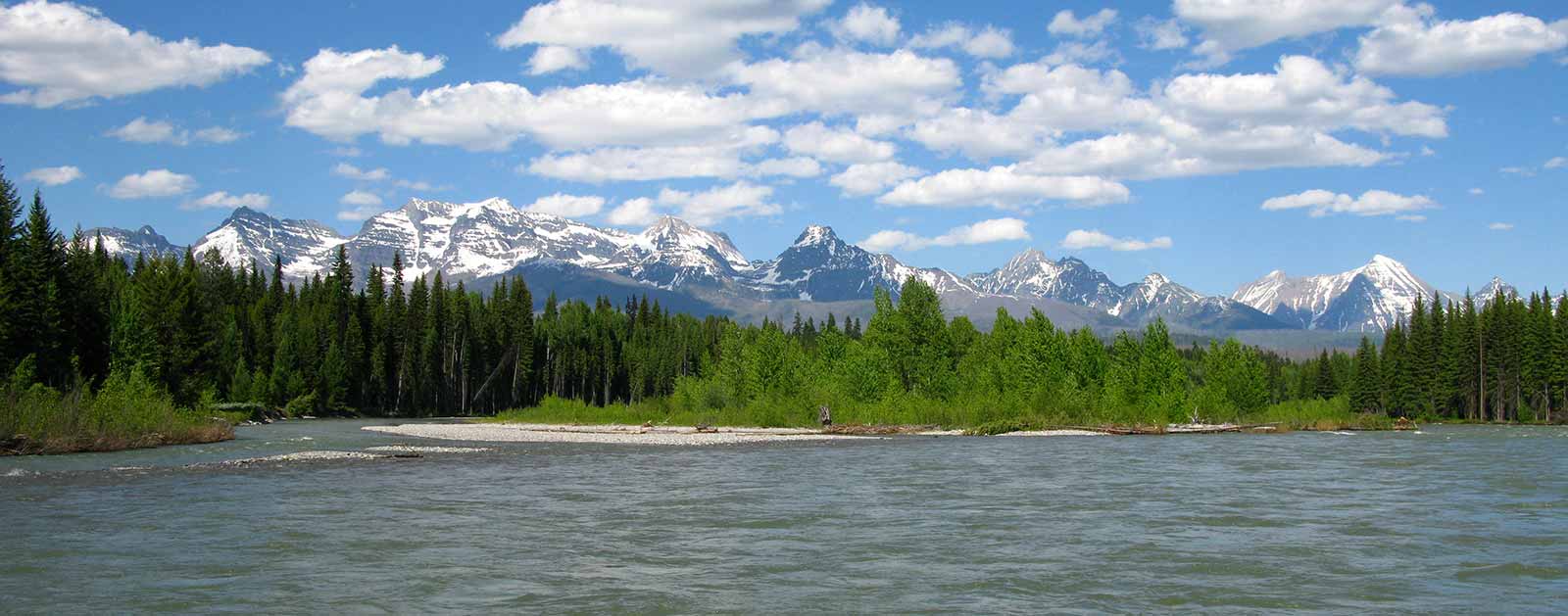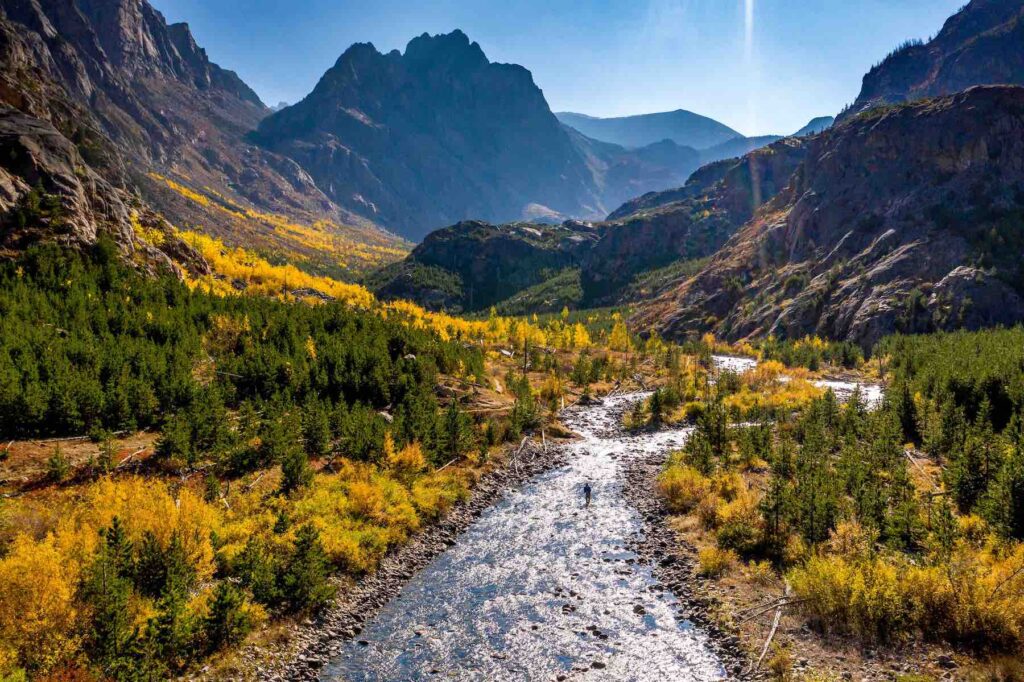North Fork of the Flathead River
Transboundary conservation at its best

In the 1940s, the U.S. Army Corps of Engineers sought permission to build Glacier View Dam on the North Fork of the Flathead River that serves as the western boundary of Montana’s Glacier National Park. The dam would have inundated some 25 miles of river and submerged nearly 20,000 acres of the park.
Thankfully, conservationists prevailed, and in 1976 the North Fork was designated a National Wild and Scenic River alongside its kindred South Fork and Middle Fork.
The North Fork Flathead is undeniably a magical place. The gliding stream of emerald water flowing past a seemingly endless procession of rugged, snowcapped peaks offers superb recreation, show-stopping scenery, terrific fishing for native cutthroat trout, historic sites, and a dense riverside forest sheltering grizzlies, wolves, and moose.
From its origin in the Canadian Rockies until it empties into Flathead Lake 150 miles downstream, its water quality is among the best of any river in the Lower 48, clear enough to see native westslope cutthroat trout and bull trout suspended at the bottom of its deep pools. The North Fork is a recreational paradise for coldwater anglers and paddlers alike. Its class I-II whitewater typically remains boatable into the summer.
The only settlement along its banks is tiny Polebridge, home to the Polebridge Merc and the Northern Lights Saloon, a classic American watering hole. The secluded setting leaves the stars in the night sky “as bright as fresh struck flames,” as late Montana author A. B. Guthrie once described them.
Did You know?
Flathead Lake has the largest surface area of any freshwater lake in America west of the Mississippi River. Lake Tahoe, however is larger by volume.
All told, the Flathead’s three forks comprise 219 miles of Wild and Scenic River. The upper Missouri River (149 miles) is Montana’s only other Wild and Scenic River.
The lower Middle Fork and entire North Fork mark the southern and western boundaries, respectively, to Glacier National Park.
What states does the river cross?
Montana

The Backstory
The North Fork enjoyed another triumph in 2014 with the signing of North Fork Watershed Protection Act, landmark legislation that removed the watershed on both sides of the international border from any new mineral leasing. The legislation was drafted in response to more than four decades of attempts to establish open pit coal mining, gold mining, and oil and gas drilling within the watershed in both Canada and the U.S.

Let's Stay in Touch!
We’re hard at work in the Northern Rockies for rivers and clean water. Sign up to get the most important news affecting your water and rivers delivered right to your inbox.
The threats posed by mineral development led American Rivers to list the North Fork as one of America’s Most Endangered Rivers® in 2006 and 2009. In 2010, the threat was assuaged when Canadian officials announced during the Vancouver Olympics they would permanently withdraw their country’s portion of the watershed from all such activity if the United States promised to do the same. Four years later, President Obama signed the legislation to formally withdraw 430,000 acres of public land in the U.S. portion of the watershed from all new mineral leasing.
The Future
Today, the greatest threats to the North Fork are unsustainable timber harvesting in its Canadian headwaters and invasive lake trout that are moving upstream from Flathead Lake. Ongoing commercial logging at the headwaters increases sedimentation issues that can impair reproduction and survival of threatened bull trout and native cutthroats. The web of new logging roads results in fragmentation of habitat that can have dire impacts on grizzlies, moose, elk, and other mammals.
Lake trout introduced to Flathead Lake create a bigger headache, as they migrate upstream and into lakes on the west side of Glacier National Park where they prey on native fish species. Short of poisoning the water, removal of lake trout has proven to be a challenge elsewhere. Still, the North Fork Flathead remains one of the last best strongholds for bull trout anywhere in the Lower 48.
Battles still loom for the North Fork Flathead. And history offers every reason to believe success does too.
